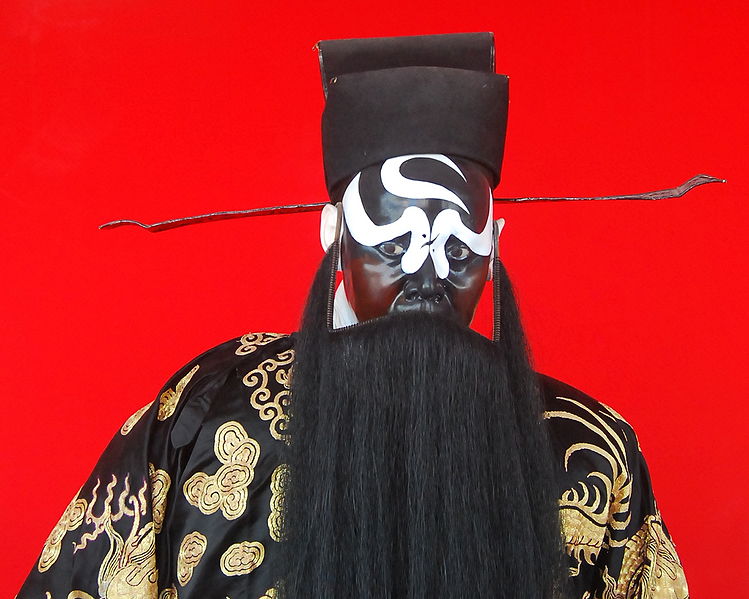Perfect Upright
/ One of the most important basics that most martial artists teach is having an upright posture. This is often the very first lesson. Cat stance and horse stance are usually the first two stances taught in Northern Shaolin and both require an upright posture, and the same is true for the vast majority of martial arts. A good martial arts teacher will correct a student's uprightness incessantly.
One of the most important basics that most martial artists teach is having an upright posture. This is often the very first lesson. Cat stance and horse stance are usually the first two stances taught in Northern Shaolin and both require an upright posture, and the same is true for the vast majority of martial arts. A good martial arts teacher will correct a student's uprightness incessantly.
The Chinese word for upright is zheng 正 and it carries a lot of different meanings. Like our English term, it invokes the notion of an "upright character" but is perhaps even stronger in that it implies good posture comes from being a virtuous person and visa versa. It also implies a correct way of being, and by inference good citizenship, and is even used to mean "government approved."
The ritual culture of China is ancient and until the 20th Century was a defining characteristic of both national and local governance. So rituals were refered to as upright or not upright, meaning they were conducted in a way and for a purpose which was either orthodox or heterodox* depending, I suppose, on whether it served the interests of a given authority.
The Daoist influence on ritual frames this uprightness as a form of naturalness, available to everyone. Having upright qi is the basis of the ritual master's prowess. Upright qi is also the result or the fruition of ritual, much like the result of meditation is stillness. For that reason, upright also means to rectify, that is, to heal through returning to simplicity.
Theater (which is traditionally understood as ritual exorcism) makes the notion of upright and upright character vivid by contrasting the upright glowing qi radiance of one character with the rumpled hunched character of another.
 So given all the cultural significance of uprightness, even if it had no martial function it might still be a key part of Chinese martial arts; however, uprightness is also an essential part of martial arts skills and self healing.
So given all the cultural significance of uprightness, even if it had no martial function it might still be a key part of Chinese martial arts; however, uprightness is also an essential part of martial arts skills and self healing.
In a surprise attack, the simple act of fighting to recover an upright posture can be decisive. For children and smaller adults a head attack or a punch straight upwards is the quickest route to unstoppable force. Having an upright centerline is a necessary step to many other skills including evading with small movements and turning around ones central axis to attain a superior position or execute throws, to name a few of the more important ones.
But this post is titled "Perfect Upright." Knowing "upright" is pretty easy, it's the sky, it's always there. It's also the spontaneous ability of all the liquid aspects of ones body to go immediately to level, like water in a glass or the mast of a sailboat pointing at the sky. Even better, every cell in the body has fluid in it, it is as if we are made of sand and every grain of sand knows where up is. Perfect uprightness is effortless. Anything less than perfect uprightness requires effort.
Why is this a problem? If perfect uprightness is effortless, why would it need to be taught at all?
The first reasons is that humans are really good at carrying things. When as toddlers we learn to carry things, we find it very amusing because anytime we pick something up or drop it, we have to completely re-balance every cell in our bodies. By the time we can speak we are already perfect masters of this skill and it has become unconscious, so we don't even notice we are doing it. In addition, we master more complex skills, like carrying a glass of water without spilling it. That requires loads of unconscious tension because half the cells in our body are doing twice the re-balancing work to compensate for the part of our bodies which remains still. Normal face to face communication, like conventionally holding our head in one position to show we are listening also requires loads of unconscious tension.
 Bao Zheng, The Upright Judge, A Deity & Theatrical FigureThe second reason is that humans are really good at pushing. I recently spent a lot of time with a few two week old baby goats. They are already masters of pushing because they use it socially to establish dominance and submission. They love pushing on a persons hand. If there is no break in the person's structure they will change position and try again, if there is a break in structure, they will plow right through. They do this with a lot of sensitivity. Humans are the same, and it is an unconscious process. Ask a few eight year old boys to stand on roughly the same spot and they will start pushing each other, usually on the shoulder, each trying to control the spot--back and forth, stumbling then recovering--they love doing it and it's totally automatic. When people learn martial arts they often get social dominance behavior mixed up with good fighting skills. Pushing is not a martial skill, it is purely for social dominance purposes. If the person you are pushing is stable you will push yourself backwards.
Bao Zheng, The Upright Judge, A Deity & Theatrical FigureThe second reason is that humans are really good at pushing. I recently spent a lot of time with a few two week old baby goats. They are already masters of pushing because they use it socially to establish dominance and submission. They love pushing on a persons hand. If there is no break in the person's structure they will change position and try again, if there is a break in structure, they will plow right through. They do this with a lot of sensitivity. Humans are the same, and it is an unconscious process. Ask a few eight year old boys to stand on roughly the same spot and they will start pushing each other, usually on the shoulder, each trying to control the spot--back and forth, stumbling then recovering--they love doing it and it's totally automatic. When people learn martial arts they often get social dominance behavior mixed up with good fighting skills. Pushing is not a martial skill, it is purely for social dominance purposes. If the person you are pushing is stable you will push yourself backwards.
Upright power is among the most basic and most advanced skills. Perfect upright power is one of the most exciting things a martial artist can experience!
________________
*Orthoprax/heteroprax are better terms for ritual because it is something one does not a specific way of thinking.
